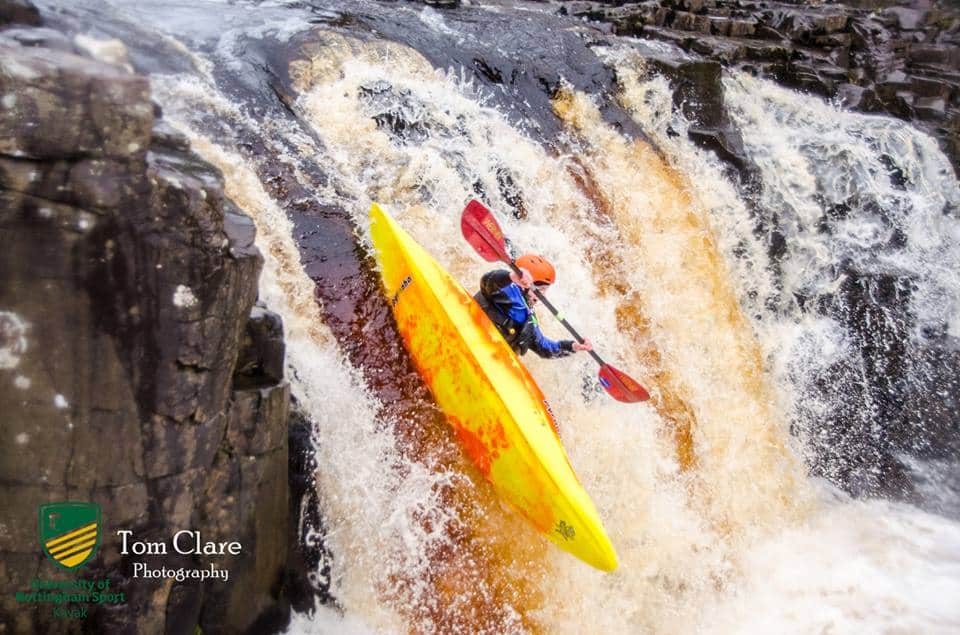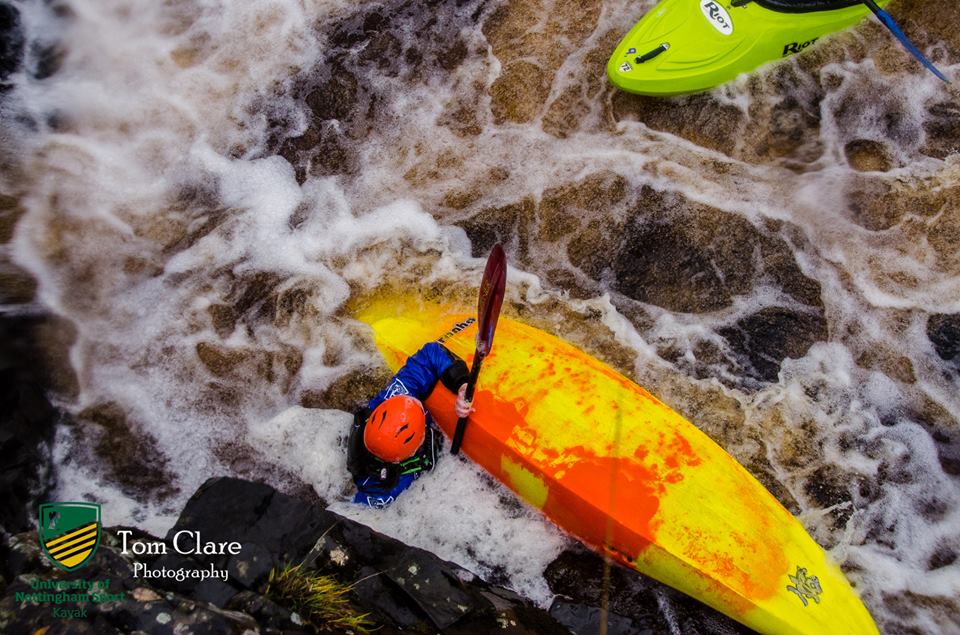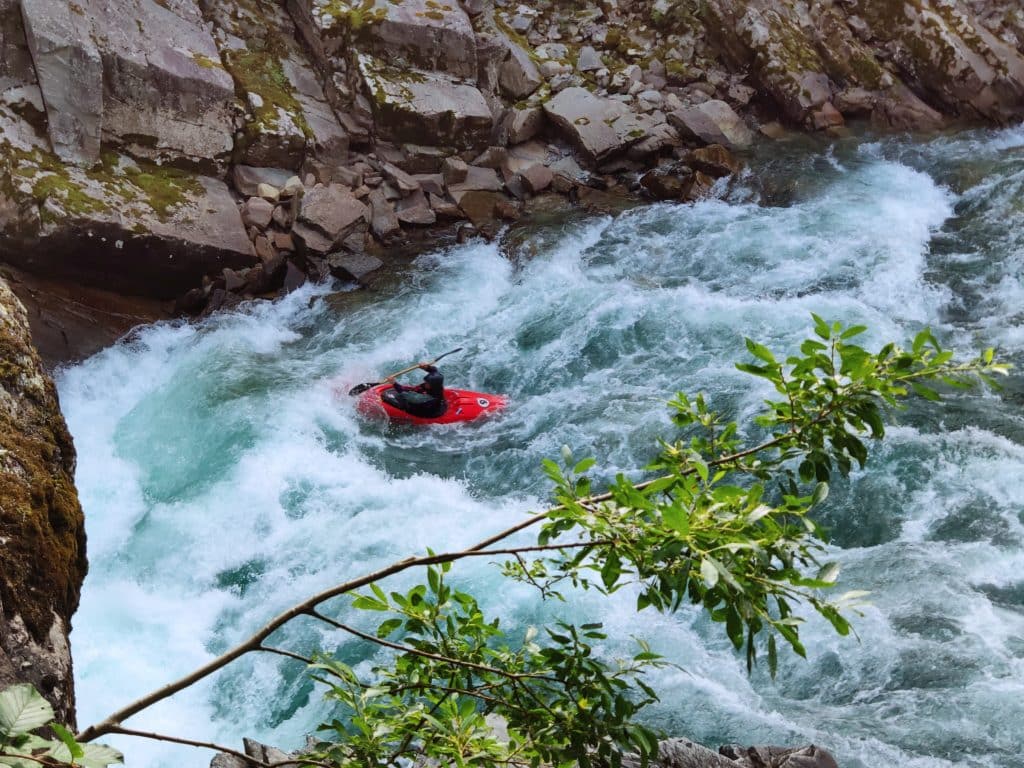I recently had somebody reach out to me to ask me if I had any advice or tips for someone just starting out in kayaking. The person asking was the social and welfare committee member at a University kayaking club. They were relatively new to kayaking themselves and weren’t sure how best to support new paddlers in the club. This person was also keen to hear any tips for encouraging more women to get involved in the club. After sending some ideas across, it occurred to me that this would make a perfect blog!
White water kayaking is such an incredible activity which can quite easily become the greatest love of your life. However, starting white water kayaking can come with a steep learning curve which can sometimes put people off. Here are 6 tips to support new paddlers and help them to fall in love with white water kayaking. Please do comment if you have any tips of your own to share!

1. Make the environment not immediately off putting!
I am sure there is a more concise way to phrase it but the heading for this point says it all. If you put people in an uncomfortable position too early on – they will not come back. There is no point in throwing beginners down white water rapids where the level of paddling needed to negotiate that rapid is far beyond their skill level. They could hurt themselves through capsizing or swimming. They will also most likely be so scared that any enjoyment that could be gained from that rapid is lost. Chances are, they won’t want to come back to try it again.
Instead build the difficulty of the environment up slowly. Start off if you can in a safe and comfortable environment such as a pool or a lake in the summer months. Build up simple skills and confidence. Then build up additional skills needed from there. If you are a white water club, plan the first river trip to be a river that has a current and some eddy lines but no significant white water. Matlock is a local favourite of mine for this. When I lived in Birmingham – it was Jackfield rapids. Teach basic skills such as how to get out or into an eddy. Maybe even build up to ferry gliding. In those calmer and safer environments, paddlers will feel more confident to try the skills you are teaching them. Then when you do build up to tackling more significant rapids, they have a better chance of successfully paddling them and hopefully if they do swim won’t be completely put off the sport.

2. Lending warm and dry gear
Learning to paddle in the UK is a cold experience. I cannot imagine paddling a UK winter season now without my drysuit. Our UK winters can be cold, miserable and very off putting. A beginner probably won’t have the gear needed to make that environment more comfortable and so having club gear that can be lent out is a game changer. A proper dry cag and some warm thermals are essential and can be the difference between someone carrying on after a swim or having to get off the river.
This is one point that I think is particularly relevant for women. Women on average will feel the cold more easily than men. In the winter, I will often wear 7 layers under my drysuit whereas many of my male friends will be fine with just the one layer. If you have some keen new paddlers in the club who feel the cold more easily, can you find them some extra thermals? It might be the thing needed to ensure that they keep up the sport!

Making sure that you have gear and boats to fit a range of people is also important. Obviously we are all different sizes but if your club has absolutely no kayaks or gear that would fit smaller or larger people – then those people cannot access the sport. For example if you have 10 large cags to lend out or only medium sized kayaks, then not everyone is going to fit into those. I completely appreciate the difficulties of this by the way but my point is, try to at least have a range of starting options!
3. White water kayaks!
As with gear, try to have a range of boats to lend out in the club. Then take the time to show people how to do basic outfitting changes in their boats to make it more fitted to them. Most people will not think to change the position of the footplate unless told to do so. It may be obvious to an experienced paddler, but not to a beginner. Most women would also benefit from changing their hips pads and support from behind instead of above their hips. Yet even experienced paddlers are often amazed when I share that tip with them! Fitting better in a kayak will help people to feel more in control.

Spend 5 minutes at the start of a trip showing people how to correctly lift and carry their kayaks. Carrying a kayak can feel very awkward at first and people might not even realise they are doing it wrong. To avoid anyone hurting themselves, I would really recommend starting with this. Be mindful that your new paddlers may also need more assistance in carrying or loading kayaks. Offer support if you can but remember to ask if people would like that help instead of assuming that they do. I have helped to carry many people’s kayaks in the past for them – both men and women. People are usually grateful for the offer of help but appreciate having the option to be independent.
4. Make sure that people are having fun!
Kayaking should be about having fun! Sometimes kayaking is just taken way too seriously. For example, when a group are going down a rapid, the leaders might feel stressed because they are conscious that they need to look after the rest of the group. That could in turn stress out the people they are leading and they then learn to be scared of the water. Yes, looking after the safety of others is serious and I would be concerned with any leader who doesn’t realise this. But being serious doesn’t have to mean you can’t have fun at the same time!
I actually think that the best river days are when you are having fun through play. You might be going down a moving section of water but not white water. Getting people to play games in this environment, such as catch with a ball or tag, is a great way to learn. Paddlers will start to practice harder paddling skills such as turning whilst holding an edge or focusing on paddling in a straight line. As they are having fun, they are not focused on being scared. People are relaxed and without even realising, will be learning. And if they are having fun – they are much more likely to come back!
5. Having a culture of support and reassurance
Having helped out a lot with University kayaking clubs, I’ve done my far share of introducing people to their first experience of white water. I can guarantee you that every single one of those people were nervous. It is okay to be nervous! New experiences can be a little bit scary. For example, if you are paddling Low Force waterfall on the Tees for the first time, that is terrifying! Reassuring people that their emotions are valid and that there is no pressure to paddle a rapid that they don’t want to is so important.

I find that sometimes with nervous paddlers, it can come out as bravado. For example, shouting ‘Yeah let’s send it!’ in response to scouting a rapid which is a step up to what we have paddled so far on that river. The issue is that if that attitude becomes a cultural norm in the club then other paddlers in that group who are nervous might think that they are the only one! The result? Both types of paddlers have an equal chance of swimming the rapid but the quieter paddler feels like they shouldn’t be there. They may falsely believe that no one else is feeling scared when in reality – everyone is scared!
Having a club culture where it is okay to walk a rapid or express fear is so important. There is no shame in walking something that makes you feel uncomfortable. Kayaking is meant to be fun and if the funs stops, it is okay for the paddler to stop too. If you encourage that kind of mindset in your club, then you are much more likely to get people wanting to come back because they know it is a safe place.

I have heard horror stories of some University clubs where people are ‘shamed’ if they have a roll or a swim. Having a shared laugh when someone has a silly swim is totally okay but no one should be shaming beginners who have very little control of their kayak! Especially if that swim was unpleasant or the roll was in practising a new skill!
Instead, make your club the place where paddlers feel no pressure to paddle certain rapids but equally they feel supported and encouraged to step up to the challenge when they are ready.
6. Spend time teaching basic skills
I was terrible at kayaking when I first started. Nothing came naturally to me and every skill seemed to take me 10 times longer to learn than it did for other people. I remember one beginners trip on a grade 2 section. I swam every time I crossed an eddy line and was beginning to feel like I was burdening my group. Everyone else seemed to find it so easy.

I remember this lovely woman, Katalla, coming over to me. I just thought she was like a goddess, she was so good at kayaking. She buddied up to me and said ‘let’s teach you how to get out of this eddy’. She must have spent an hour or two teaching me how to cross an eddy line. I hadn’t realised that you were meant to do things like edge! I had gone down all these little rapids and I didn’t even know how to cross an eddy line! This day was 7 years ago and yet I still remember that trip so fondly She chose to spend that time helping me and I will always be grateful to her and everyone since who has ever spent time trying to help me to learn how to kayak.

I often think of Katalla and all those who have helped me become a better paddler and what an impact they have had. I want to give that support back. Don’t underestimate the impact you can have on those people just starting out. Make people feel supported to practice new skills is so important. That reassurance that someone is not a burden is so important.
7. Role models
I know, I said 6 tips! But here is a cheeky extra one just for you. Having role models for people to relate to and aspire is so important. If people don’t have those in the club already, you can direct them to role models outside of the club. These role models can take all manner of forms.
Encourage new paddlers to attend events both within and outside of the club so they meet more people. Have club film nights or invite guest speakers to showcase the incredible things that can be achieved in this sport. Connecting new paddlers with a mentor or coach of some form is also valuable. This could be within the club or beyond.
The paddling community is incredible and helping someone to connect with and become a part of that community can help to turn someone’s hobby into a lifelong part of who they are. Role models are a big part of that!

Thank you
Thank you for reading! Please do comment if you have any tips of your own to share!

One reply on “How to make people fall in love with kayaking: 6 tips to support beginner paddlers”
[…] year ago I wrote an article sharing tips to support new paddlers and help them to fall in love with white water kayaking. […]